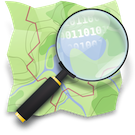Check out Best of OSM (bestofosm.org), a site highlighting areas where the map isn’t just insanely great, but super turbo awesome level 5.
Article about OSM in French
…which I don’t understand, but hey it looks good! Look here
Whose maps serve India best?
Thus, three strategies are now in play in India: a high quality solution which is a public goods effort (Openstreetmap), a good solution which is owned by a corporation (Google) and a poor solution which acts like a corporation (Survey of India). The users of maps are flocking to Google, Nokia and Openstreetmap.
Read the article at Financial Express via Directions Mag
FLOSS Weekly interview
Catch the podcast of me on FLOSS weekly over here. You can also watch the video over here but beware it didn’t play for me.
OSM in Qt on the S60
Cool post:
Like I promised few days ago, here is the demo that shows tile-based OpenStreetMap rendering on Qt/S60. If you never heard of OpenStreetMap before, it is “a collaborative project to create a free editable map of the world” (from its Wikipedia entry). You can try it at www.openstreetmap.org. It might not be as complete as other maps solutions, but surprisingly, OpenStreetMap coverage for many world big cities are detailed enough for most users.
OSM in The Guardian
Good article:
For five years, people have been contributing to OpenStreetMap – the Wikipedia-like attempt to create a free, user-generated map of the world.
Thanks to the project, millions of people now use free maps online or on their phones, and OpenStreetMap covers large swathes of major cities around the globe. In fact, it’s got so much information that some users in Germany are now plotting incredible amounts of detail – such as the location of individual trees.
FLOSS weekly
I’m being interviewed on FLOSS weekly at 1:30 pm Pacific time today. You can, I think, watch it live here.
Watch State of the Map live!
If reading via RSS, see this post for embedded live streaming player.
OSM on TV in DE
Finding things to fix
You might be familiar with the nonames layer which highlights roads which don’t have a name, typically because they’ve been drawn in from aerial imagery:
Now to aid you fix up TIGER there is a layer to figure out what needs checking. See what this looks like in San Francisco:
The red lines are roads imported from TIGER data which have not been edited yet, the green ones have been. The idea here is to find some red lines, click the ‘edit in OSM’ link at the bottom right and then modify the tiger:reviewed tag to be ‘aerial’ if indeed you can check it against aerial imagery.
Next is addressing. This layer shows where there are buildings, points of interest and ranges of address data. See this example in London:
This is really useful to see where we next need to add address data. Notice the patches of addressing most likely centred on key peoples houses. OSM started this way with roads around key people, and spread in to the fantastic map you see today. Employing the same strategy of exposing where the data is we can quickly fill in the blanks.




